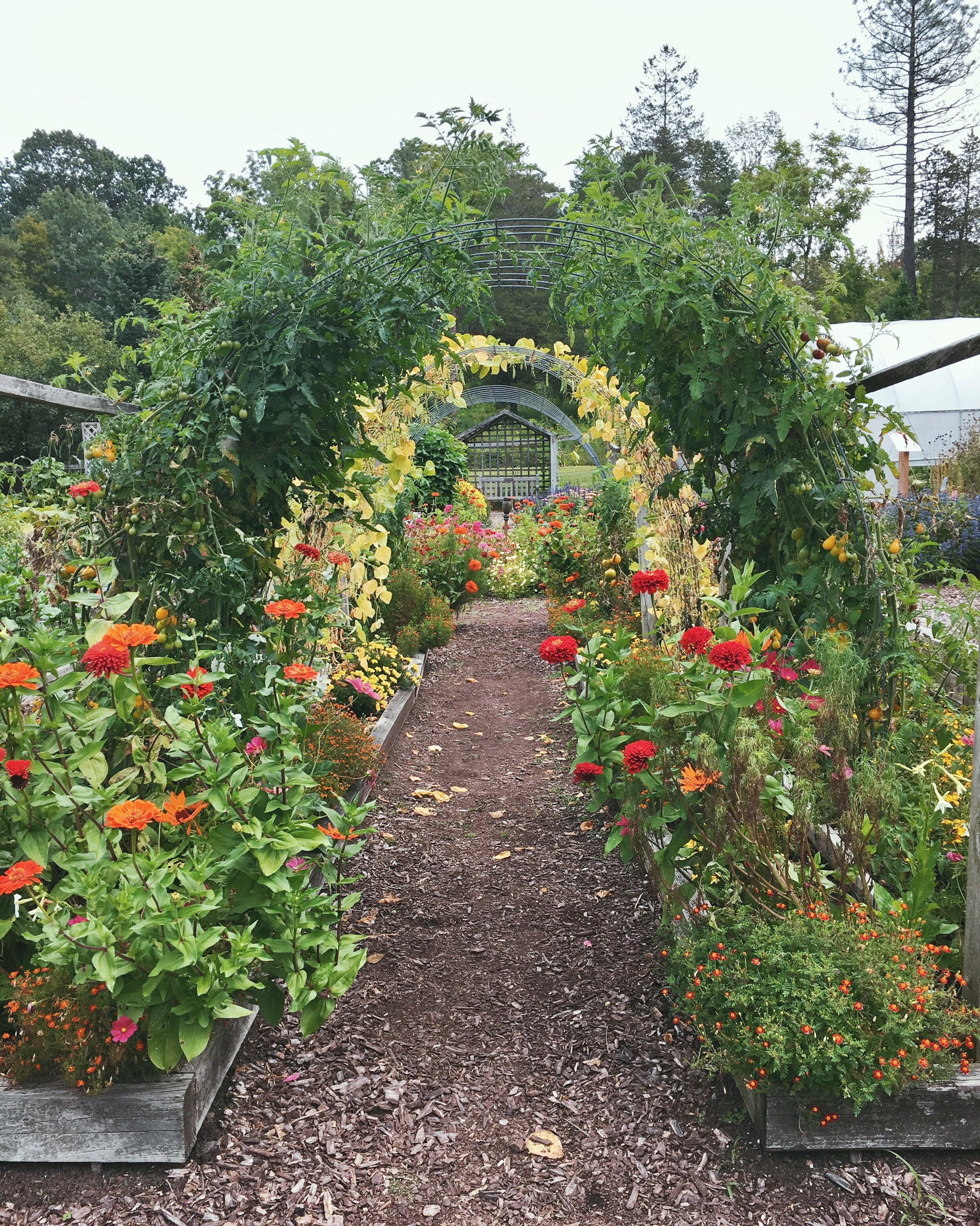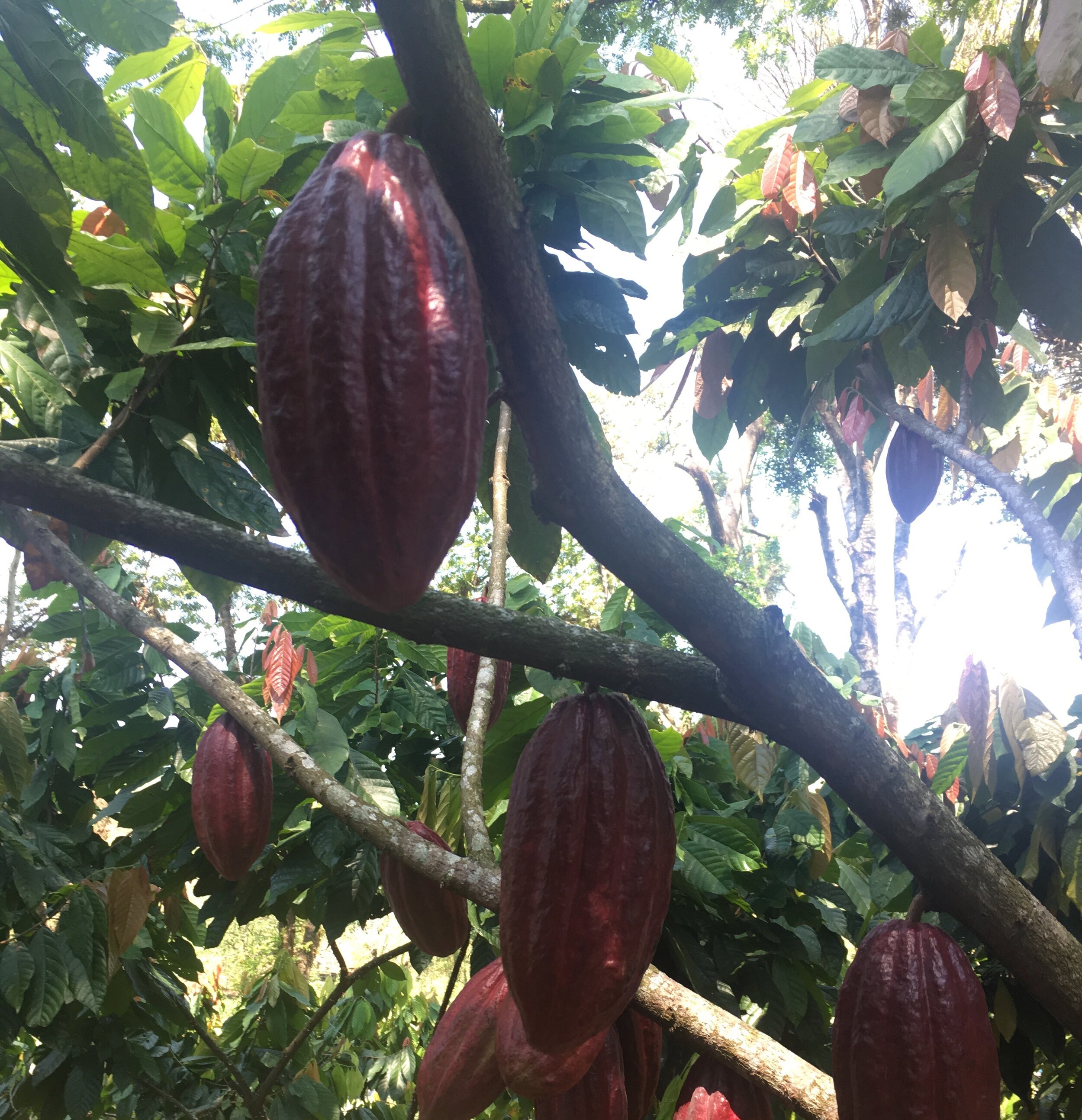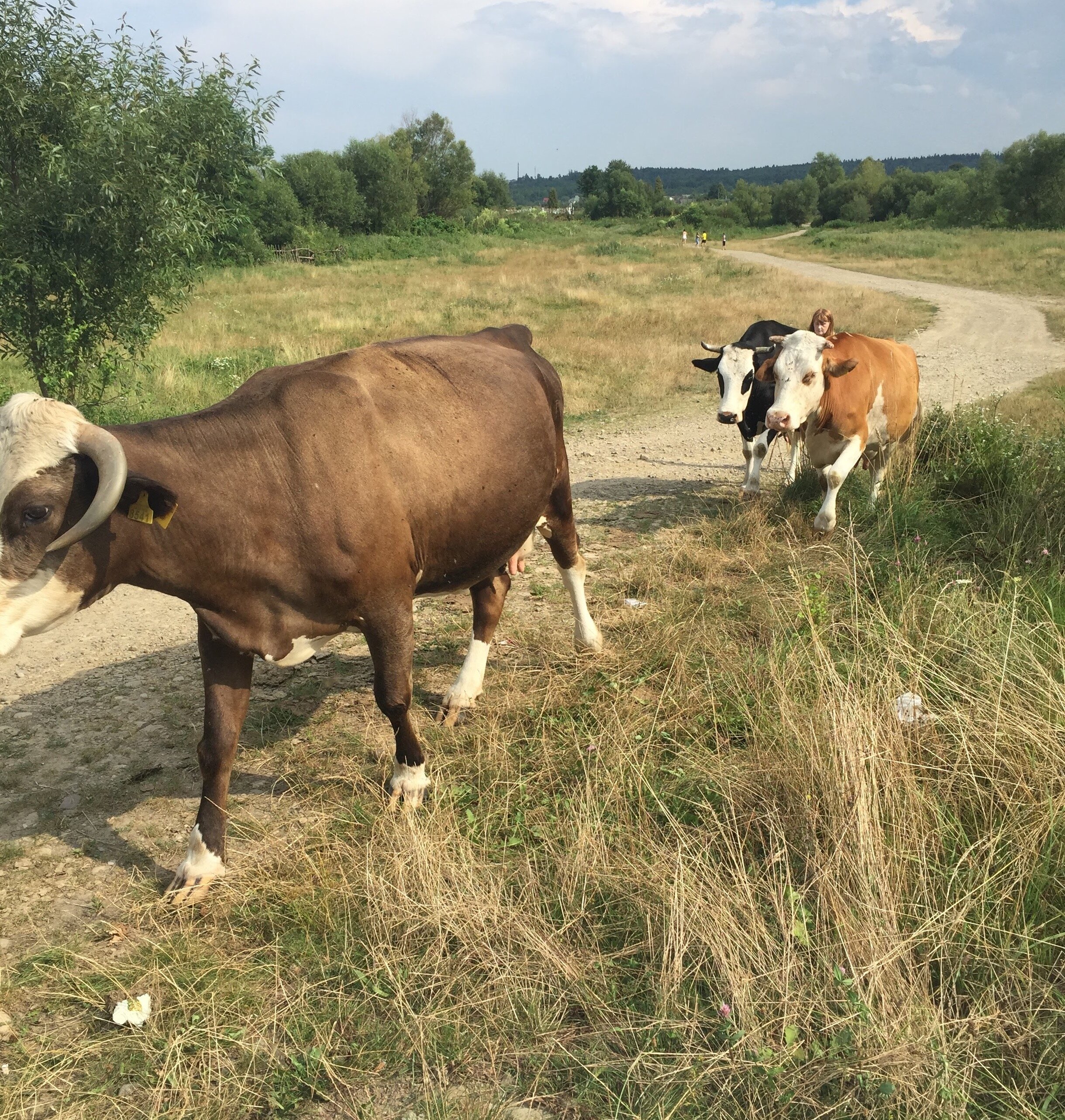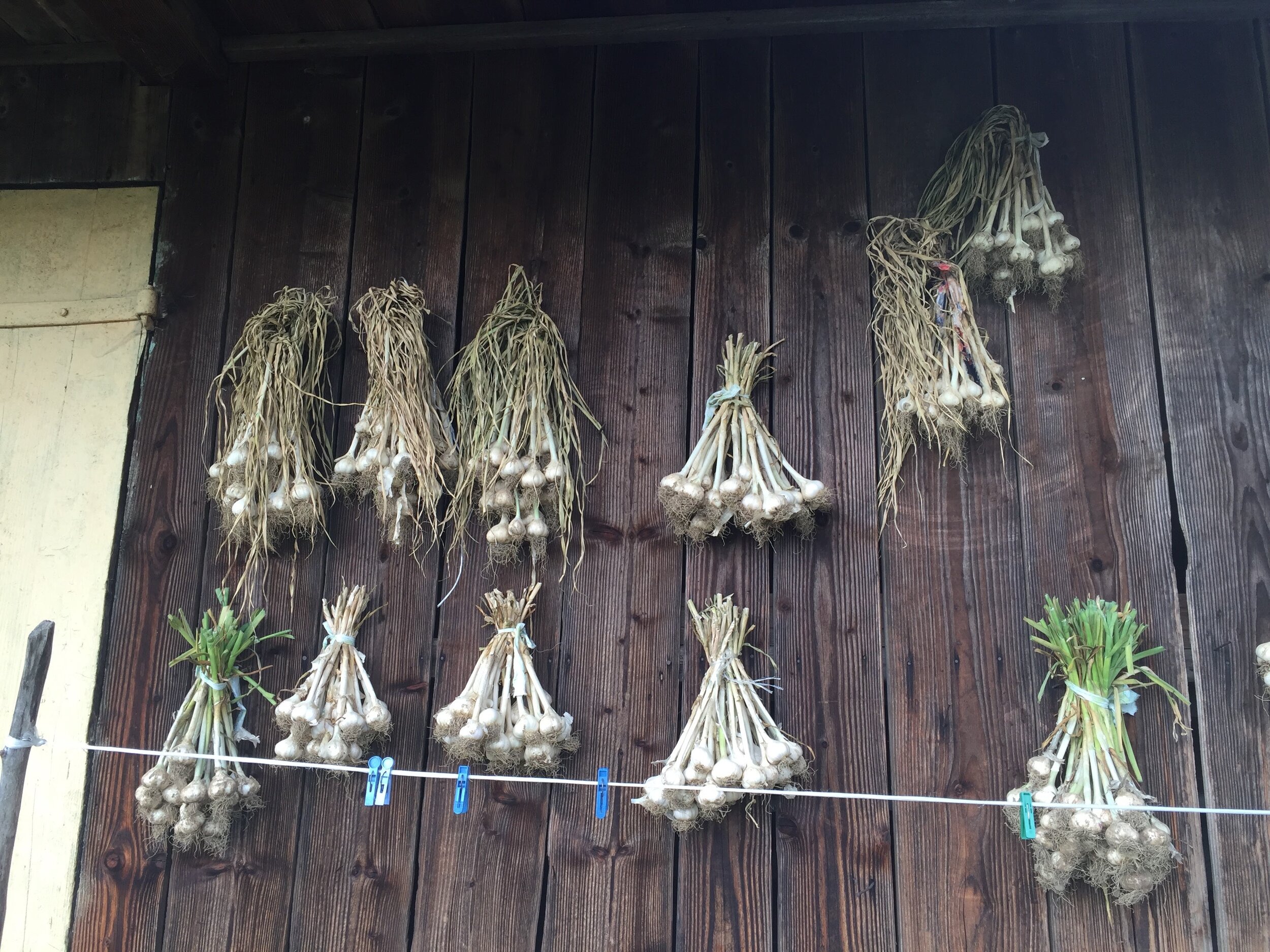Regenerative Agriculture
This article was written by staff writer Oksana Bihun. Read about Oksana here.
“Sometimes people think that evolution’s all about competition, but there’s a heck of a lot of cooperation in the change of evolution over time and adapting to circumstance.”
— David Marsh, “From the Ground Up - Regenerative Agriculture”
Soil Science and I had a rocky start to our relationship. In college, I’d sprint up ungodly Ithaca hills at 8:30 in the morning to make it to my soil science class, arriving covered in a layer of sweat and resentment. I’d sit through the hour-long lecture about soil’s tetrahedral sheets and the difference between loamy and silty soil, more concerned with what I’d be having for lunch that day. Sadly, it wasn’t until after this class that my love affair with soil started. The diversity in look, feel, function, smell, and potential became captivating for me. Soil makes or breaks plants, and that doesn’t just apply to your Monstera at home. Soil health on farms is critical to the growth of crops and even more importantly, our entire food chain.
At its healthiest, soil is a bustling metropolis of healthy microorganisms that help crops grow and capture carbon while doing so. Unfortunately, many of our current farming methods are depleting the soil and causing it to release carbon into the atmosphere – the opposite of what it should naturally do. Some solutions have been discussed in the science community, but one that I find most intriguing is “regenerative agriculture” because it doesn’t just reduce emissions, but rather reverse the impacts of what has already been emitted. Regenerative agriculture is a secret genius moving in silence. It’s called “regenerative” because the goal is to literally regenerate the soil to make it healthier and capable of producing high quality food. The brilliance is in its simplicity; a majority of its components are techniques we used a long time ago but have since forgotten or moved away from.
What Does Regenerative Agriculture Look Like?
Regenerative agriculture is a holistic approach to agriculture, and incorporates different farming and grazing practices that benefit soil, crops, and entire ecosystems while also mitigating the effects of climate change. It’s often difficult to describe exactly what regenerative agriculture involves, since it can take an infinite number of forms, depending on the type of land being worked on. In conventional agriculture, the focus is on consistently producing one type of crop as efficiently as possible; in regenerative agriculture, the focus is on creating as many positive relationships between things as possible. It can include a combination of different practices such as conservation tillage, rotational grazing, agroforestry, and permaculture. If you aren’t familiar with these terms, you’re not alone! Below, we’ll go step by step through each of these practices, what they look like, and how they benefit the environment.
You can also watch this short and informative video for a quick overview.
1. Conservation Tillage
Traditional tilling is done with a hoe, but large scale tilling is accomplished through huge machines.
If you’ve ever seen one of these bad boys, then you know what tilling is! It involves the mixing, turning, and stirring of soil in preparation for agriculture to reduce weeds and bring up new soil. This practice has been used for many generations of farming, but has actually been found to do more harm than good. The act of tilling often destroys the healthy systems of microorganisms living in the soil. These critters provide essential services such as aerating the soil and helping bring water and nitrogen to plant roots. Destroying them means that farmers have to rely on synthetic fertilizers, which cause substantial harm to the environment.
Conservation tillage does the opposite, focusing on reducing the frequency of tilling or eliminating the practice altogether. When the soil is tilled less often, the soil’s capacity to absorb carbon increases while also preventing any additional carbon from being released. Studies show that conservation tillage improves soil composition, promotes microorganismal activity, and improves the way that soil holds water.
To learn more about conservation tillage, check out this article from UC Davis here.
2. Rotational Grazing
Cows, and beef in general, has gotten some bad press recently. Yes, it’s true, they do release a great deal of methane, but grazing can also be extremely beneficial to the environment and a natural part of many ecosystems. If the right practices are implemented, a significant amount of carbon can be captured and stored in soil and healthy layers of topsoil can develop and grow. In current grazing practices, animals are kept in an open pasture on which they graze. Unfortunately, the grass doesn’t have the ability to grow very much before being eaten again, which results in overgrazing and eventual desertification, in which a once-healthy pasture becomes dry and barren.
Under rotational grazing, animals only graze on one part of the pasture at a time, allowing the other areas to rest and regrow. The animals are rotated from one section to another systematically so that grass and vegetation can mature and develop healthy root systems, thus improving soil quality and health. In turn, carbon can accumulate and be stored in the soil as more and more top soil develops from cow manure and biomass vegetation.
To learn more about rotational grazing, check out this article from the USDA here.
3. Agroforestry
While a collection of trees in the middle of the field might not seem like what you would expect from a productive agriculture system, agroforestry is an increasingly popular way to produce a diverse crop mix in a small area. Agroforestry is one of the more difficult concepts of regenerative agriculture to replicate, as there are an indescribably large number of different ways to make it work. The general idea is that you can use trees not only to grow different types of food, but also to improve the ways ecosystems function. The first step is to study and understand how different ecosystems work. What relies on whom, who gets their nutrients from what, and so on. Next, you recreate those dynamic interactions between living and non-living things, but in a way that produces more food. You are then left with a forest environment in which everything either grows food or helps facilitate that growth. Many examples are in the tropics like in banana production or timber amongst coffee plants.
To learn more about agroforestry, check out this site from World Agroforestry here.
Cool! So.. is this the future of agriculture?
Yes and no. Just like any other climate or sustainability solutions, the problems plaguing agriculture cannot be fixed with one swift kick. Integrating many different types of sustainable technologies and techniques is the best course of action and ensures the most stable outcome. This is similar to how the “fix” to making our energy grid greener isn’t just solar or wind; it’s a combination of a handful of different strategies that will make the system more resilient by increasing its diversity. Supporting regenerative agriculture and buying products grown with regenerative practices is one of many ways to make a positive impact on our agricultural systems and environment.
But these regenerative techniques that focus on ecosystem relationships and foster soil health don’t have to be contained to large scale agriculture! There are definite ways in which we can implement regenerative agriculture practices at home:
Research what type of plants are native to your area and plant them in your garden or outdoor space. This will increase the amount of other native species, such as birds and butterflies, that will come back to the area.
Focus on planting perennial plants; they stabilize the soil and store more carbon because they don’t need to be tilled and replanted every year.
Compost your food and yard waste and add the finished compost to your soil to improve the soil health. It’ll provide a great source of nutrients to the soil to help both microorganisms and, in the long run, plant health and growth.
This article was written by Staff Writer Oksana Bihun. Read about Oksana here.
Are you interested in contributing to Grounded Grub? Contact us anytime with proposals, we’d love to hear from you.








